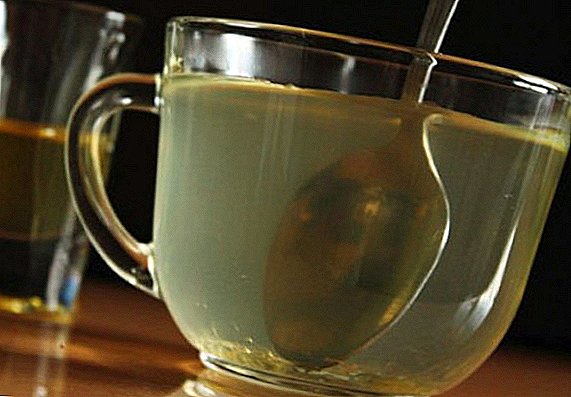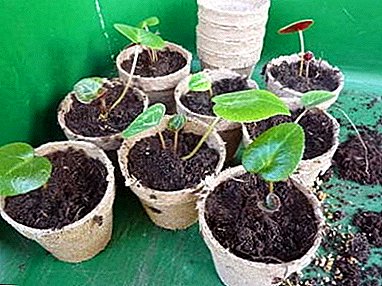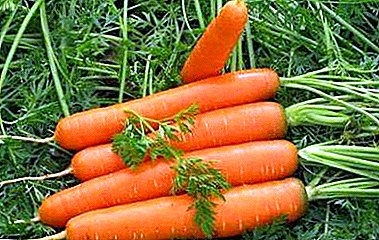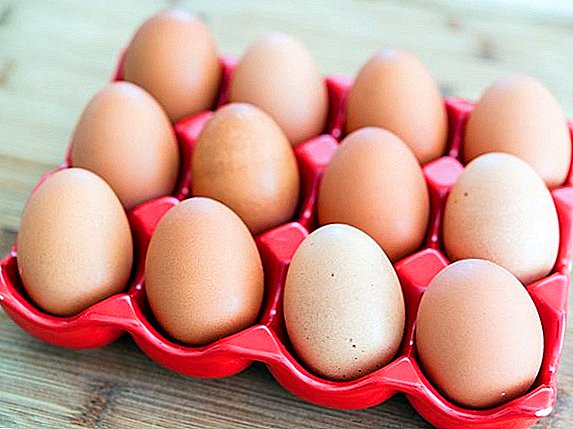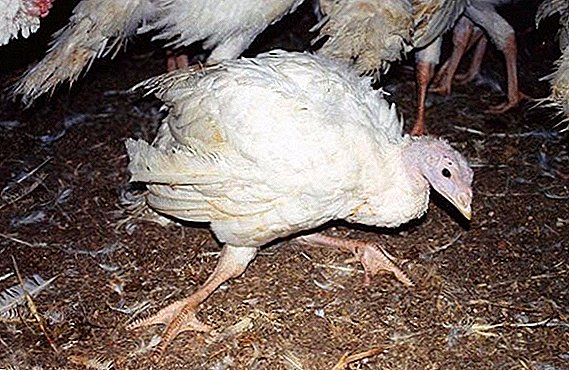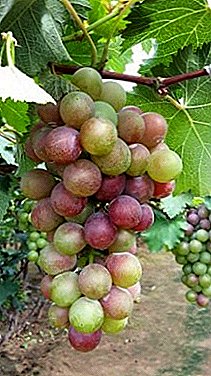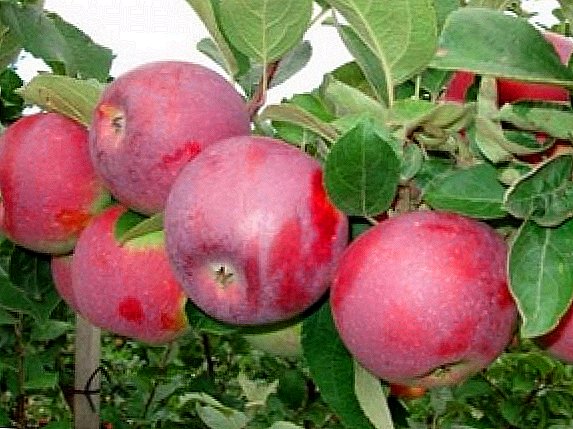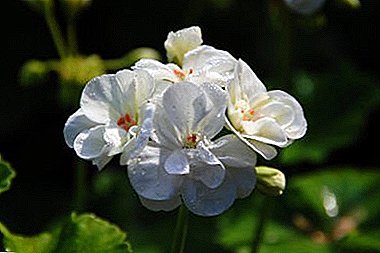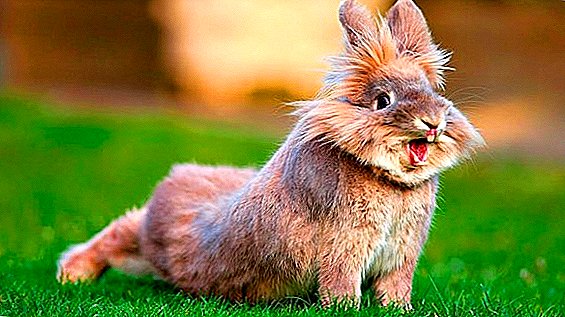
Petunia is one of the most beautiful and delicate plants. It decorates not only the flower beds near state institutions, but also window sills of the houses of the inhabitants of Russia. Unpretentiousness in the care and flowering, continuing until the first frost - that's why flower growers love it.
But even such an undemanding flower sometimes hurts. Yellow upper and lower leaves - the first sign of the disease. Is it dangerous, why is this happening with plants in pots and pots, how to deal with the problem and prevent it - find out in the article.
Why do leafy plates of a flower turn yellow?
A lot of diseases and improper care and watering lead to yellowing of the leaves of the plant. The reason may be:
- Lack of solar heat and nutrients.
- Pests such as spider mites and aphids.
Causes of the phenomenon
Abundant watering
 Root rot occurs due to excess water. The stalk at the base becomes soft, its gradual dying begins. Petunia leaves turn yellow, curled. The plant will die if time does not stop the disease. Perhaps the development of fungal diseases.
Root rot occurs due to excess water. The stalk at the base becomes soft, its gradual dying begins. Petunia leaves turn yellow, curled. The plant will die if time does not stop the disease. Perhaps the development of fungal diseases.
To avoid such problems in time, it is necessary to fulfill several conditions:
- In time to remove the affected shoots, and healthy parts of the plant to process the fungicide (a chemical substance aimed at fighting fungal diseases).
- Prevent water stagnation. Water it when it dries out about 1 cm of topsoil and drain water from the pan 15 minutes after watering the flower.
- Loosen the soil. This method increases the access of oxygen.
Spider mite
Little red spider. He lives on the back of the sheet, envelops him with a white cobweb. Spraying and washing the leaves with plain water or non-concentrated tobacco extract, pollination (in the air, outside the room) with crushed sulfur will help to destroy it.
White fly
No less harmful than a tick. Adult individuals live under the leaves, soaring white-yellow cloud, if you move the leaf. Larvae that have incredible vitality can be found everywhere:
- in the substrate;
- among the roots;
- in the axils of the leaves.
To get rid of the parasite is possible only with the help of weekly spraying with a chemical agent (such as Akarin or Aktara).
What is the reason for the yellowing of leaves at the plant in pots?
 Petunias growing in pots are most sensitive.. Due to the fact that the plant has undergone changes in the conditions of the content, this leads to problems with the formation of chlorophyll in the leaves. This is a disease called chlorosis.
Petunias growing in pots are most sensitive.. Due to the fact that the plant has undergone changes in the conditions of the content, this leads to problems with the formation of chlorophyll in the leaves. This is a disease called chlorosis.
In order to prevent yellowing of leaves, manure, oak leaf compost or sphagnum is added to the pots when transplanting. If a plant transplant has occurred recently, but has not taken care of soil acidification, then it is worth watering the plant before the next transplant with acidic water.
What if there is a problem?
- First look at where the plant stands:
- whether it is exposed to drafts;
- is there enough solar heat;
- is there no water in the tray where the flower is located?
- Inspect it for pests such as:
- aphid;
- mite;
- whitefly.
- Pay attention to how watering the plants:
- tough;
- soft;
- defended
- Adjust watering plants and inspect the plant daily until it is completely cured.
How to feed?
Iron chelate or Ferovit - iron-containing fertilizers. They are designed to combat the yellowing of the leaves. The plant is treated 3-4 times with an interval of several days and the problem disappears.
For fertilizing, you can use complex fertilizers, such as: Kemira Lux, Soluble, Aquarin, Plantafol (nitrogen 10/30/10, Potassium 10.54.10, Phosphorus 5.15.45) alternately with a frequency of about 7-10 days.
Replacing chemicals against diseases and pests with home-friendly products for people and small animals is a hot topic. So, what to do if the upper and lower leaves of the plant began to turn yellow without applying chemistry:

- Fertilizers during flowering, incl. on the leaf infusion of nettle, onion peel, ash. At the same time, they will protect against diseases, pests. The special value of herbal remedies is the possibility of their regular use. These fertilizers can be used once a week.
- For the treatment of powdery mildew used whey, solutions of potassium permanganate, ash, garlic or mustard infusion.
- From insect pests use decoctions of dry herbs: tansy, wormwood, calendula, marigold.
Care for the flower at home
- The leaves of the plant will never turn yellow unless the florist uses hard water for irrigation.
- Regularly loosen the soil and save the plant from frequent watering.
- Monitor the temperature and avoid excessive air dryness.
- For prevention, water the plant with iron-containing fertilizers.
We offer to watch a video on how to properly care for petunia:
Preventive measures
- It is recommended to replant the plants on cool days, and experienced flower growers are advised to take into account the requirements of the Lunar Calendar.
- Before planting a plant in a new soil, it should be scalded with boiling water, frozen, and then treated with a solution of potassium permanganate.
- Rotting will prevent gravel or expanded clay scattered on the bottom of the pot.
- For prevention, it is recommended to water the plant with a weak solution of manganese 1-2 times in 10 days.
- In the summer, pots with plants can be taken out on the balcony, and in winter - put on window sills, where there are no drafts, but enough light penetrates.
- To prevent the appearance of powdery mildew helps:
- steaming the soil before planting petunias in it;
- observance of temperature;
- maintaining the level of humidity at a constant level;
- avoid long-term stagnant moisture;
- moderate use of nitrogen-containing fertilizers (an excess of nitrogen in the soil makes petunia more vulnerable to powdery mildew).
Petunia is one of the most suitable plants for growing in containers, balcony flowerpots, hanging baskets. This flower is hardy, despite its delicate appearance, can tolerate drought, rain with wind. The main thing is to give him a little care and attention, to master the basic secrets of growing.


